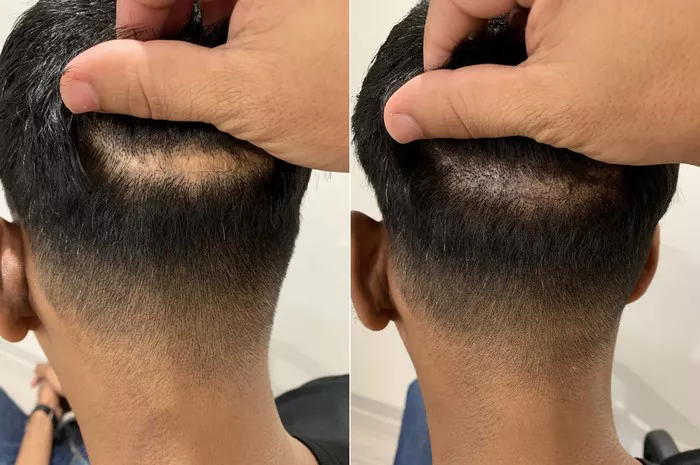Follicular Unit Extraction (FUE) is a popular hair transplant method known for its minimally invasive nature and quick recovery time. One of the most frequently asked questions by patients undergoing FUE is about the appropriate time to wash the donor area post-procedure. This article provides an in-depth look at the optimal timeline and best practices for washing the donor area after an FUE hair transplant.
Understanding FUE Hair Transplant
FUE is a hair restoration technique where individual hair follicles are extracted from the donor area, typically the back and sides of the scalp, and transplanted to the thinning or balding areas. The donor area heals with tiny, almost undetectable scars, making FUE a preferred choice for many.
Immediate Post-Procedure Care
The first 24 to 48 hours after the FUE procedure are crucial for the healing process. During this period, the donor area will have tiny puncture wounds that need to begin the healing process.
First 24 Hours
Avoid Touching: It is imperative to avoid touching or scratching the donor area to prevent any infection or disruption of the healing process.
Medications: Follow the prescribed medications, including antibiotics and pain relievers, to manage discomfort and prevent infection.
24 to 48 Hours
Rest: Ensure adequate rest and avoid any strenuous activities that could cause sweating or increase blood flow to the scalp.
Sleeping Position: Sleep with your head elevated to reduce swelling and discomfort.
Washing the Donor Area: Timeline and Techniques
Day 3 to Day 5: Gentle Cleansing
By the third day, you can start to gently wash the donor area. Here’s how to do it:
1. Preparation: Use a mild, non-scented shampoo. Mix a small amount of shampoo with water to create a diluted solution.
2. Application: Gently pour the solution over the donor area without applying any pressure. Avoid direct contact with the scalp.
3. Rinse: Use a cup or a small container to rinse the area with lukewarm water gently. Do not use a showerhead as the pressure can be too intense.
4. Drying: Pat the area dry with a soft towel. Do not rub or use a hairdryer.
Day 5 to Day 7: Increasing Washing Frequency
From day five onwards, you can increase the frequency of washing the donor area. Follow the same gentle washing technique but do it twice a day. This helps in removing any dried blood or scabs that might have formed.
Day 7 to Day 10: Transition to Normal Washing
By the end of the first week, the donor area should be sufficiently healed to transition to a more normal washing routine. However, continue to be gentle:
1. Shampoo Application: You can start to apply shampoo directly to the scalp, but use your fingertips to create a gentle lather.
2. Rinsing: Continue to rinse with lukewarm water. You can start to use a gentle shower stream, but avoid high-pressure settings.
3. Drying: Pat dry with a towel or let it air dry. Avoid using heat-styling tools.
Post-Procedure Products: What to Use and Avoid
Recommended Products
Mild Shampoo: Choose a sulfate-free, mild shampoo designed for sensitive scalps.
Saline Solution: A saline solution can help in keeping the area clean without causing irritation.
Moisturizers: Use products recommended by your surgeon to keep the scalp moisturized and aid in healing.
Products to Avoid
Harsh Chemicals: Avoid shampoos with harsh chemicals, alcohol, or strong fragrances.
Scrubs and Exfoliants: Do not use any scrubbing or exfoliating products on the donor area.
Heat-Styling Tools: Avoid hair dryers, curling irons, and straighteners for at least the first month post-procedure.
Signs of Infection and When to Seek Help
While complications are rare, it’s important to recognize the signs of infection or improper healing:
Redness and Swelling: Some redness and swelling are normal, but if it persists or worsens, consult your surgeon.
Pain and Discomfort: Mild discomfort is expected, but severe pain should be reported to your doctor.
Discharge or Odor: Any unusual discharge or foul odor from the donor area is a sign of infection and requires immediate medical attention.
See Also: What is Sapphire FUE Hair Transplant: A Comprehensive Guide
Long-Term Care for the Donor Area
Maintaining Scalp Health
After the initial healing period, maintaining the health of your scalp is crucial for the longevity of your hair transplant:
Regular Washing: Continue to wash your hair regularly with a mild shampoo.
Healthy Diet: A diet rich in vitamins and minerals supports hair health.
Avoiding Trauma: Protect your scalp from physical trauma, sunburn, and harsh environmental conditions.
Follow-Up Appointments
Regular follow-up appointments with your surgeon ensure that the donor area is healing correctly and the transplanted hair is growing as expected. During these visits, your surgeon can provide personalized advice and address any concerns.
Conclusion
Washing the donor area after an FUE hair transplant is a delicate process that requires patience and careful attention to detail. By following the recommended timeline and techniques, you can ensure optimal healing and the best possible outcome from your hair transplant procedure. Always consult with your surgeon for personalized advice and follow their instructions to achieve the best results.


